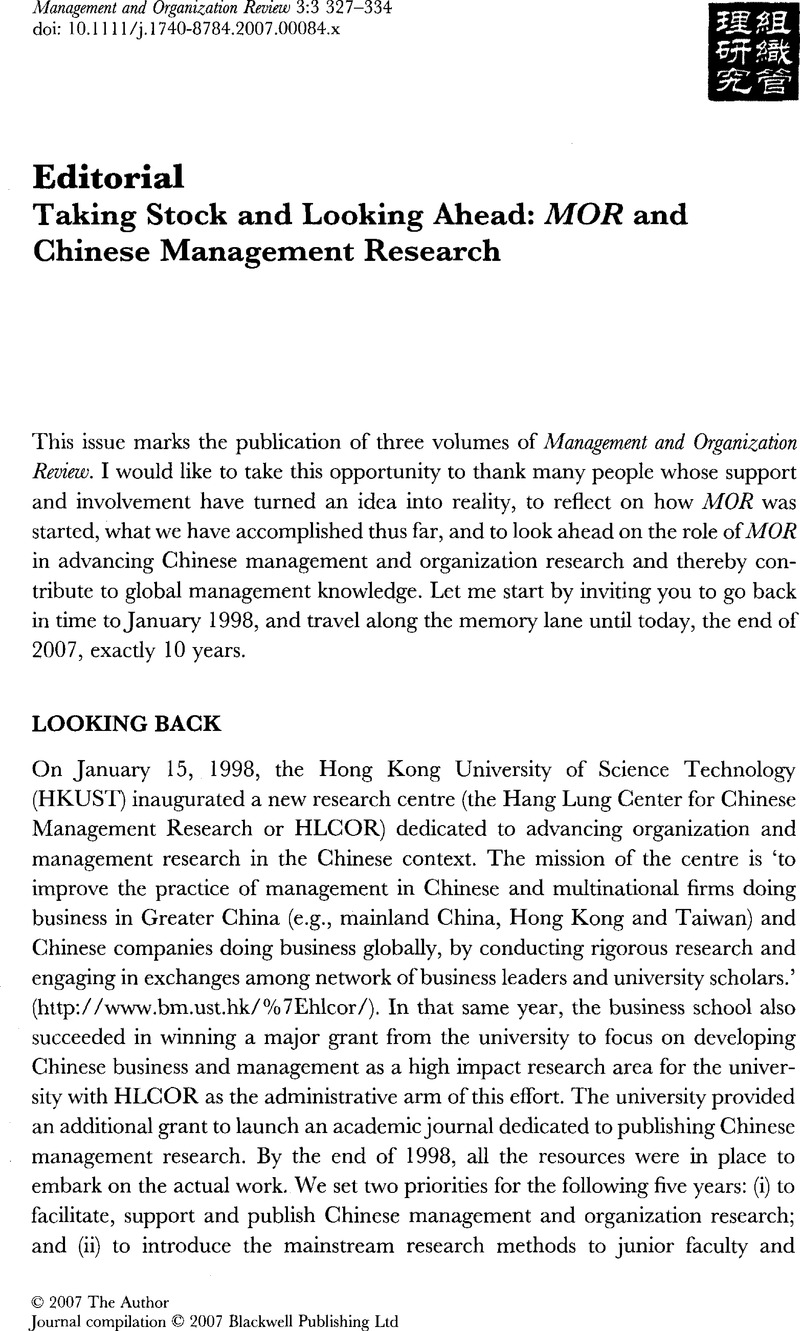Crossref Citations
This article has been cited by the following publications. This list is generated based on data provided by Crossref.
Zheng, Connie
and
Lamond, David
2009.
A critical review of human resource management studies (1978–2007) in the People's Republic of China.
The International Journal of Human Resource Management,
Vol. 20,
Issue. 11,
p.
2194.
Yang, Jixia
Zhang, Zhi‐Xue
and
Tsui, Anne S.
2010.
Middle Manager Leadership and Frontline Employee Performance: Bypass, Cascading, and Moderating Effects.
Journal of Management Studies,
Vol. 47,
Issue. 4,
p.
654.
Yang, Jixia
Zhang, Zhi-Xue
and
Tsui, Anne S.
2010.
Middle Manager Leadership and Frontline Employee Performance: Bypass, Cascading, and Moderating Effects.
Journal of Management Studies,
Chen, Guoquan
Wang, Jieyuan
Liu, Guojun
Li, Hongbin
and
Li, Qian
2011.
Stakeholder relationship management in leading changes: Case study on integration of airline companies.
p.
7253.
Bernstein, Ethan S.
2012.
The Transparency Paradox.
Administrative Science Quarterly,
Vol. 57,
Issue. 2,
p.
181.
Plakoyiannaki, Emmanuella
Wei, Tian
and
Prashantham, Shameen
2019.
Rethinking Qualitative Scholarship in Emerging Markets: Researching, Theorizing, and Reporting.
Management and Organization Review,
Vol. 15,
Issue. 02,
p.
217.
Tsui, Anne S.
2022.
From Traditional Research to Responsible Research: The Necessity of Scientific Freedom and Scientific Responsibility for Better Societies.
Annual Review of Organizational Psychology and Organizational Behavior,
Vol. 9,
Issue. 1,
p.
1.
Dong, Xiaoying
Yu, Yan
and
Zhou, Jiali
2023.
Cisco.
p.
1.





